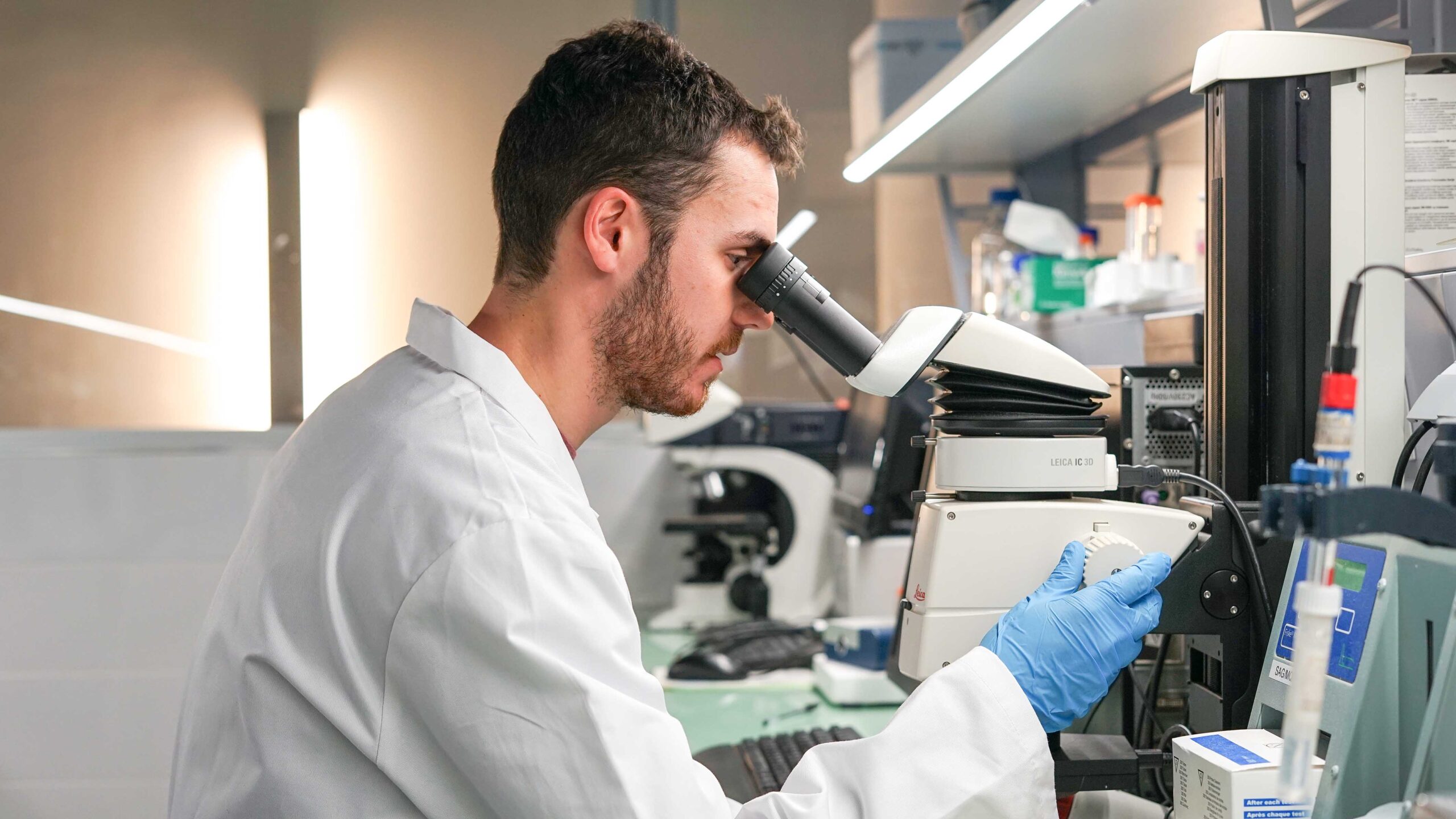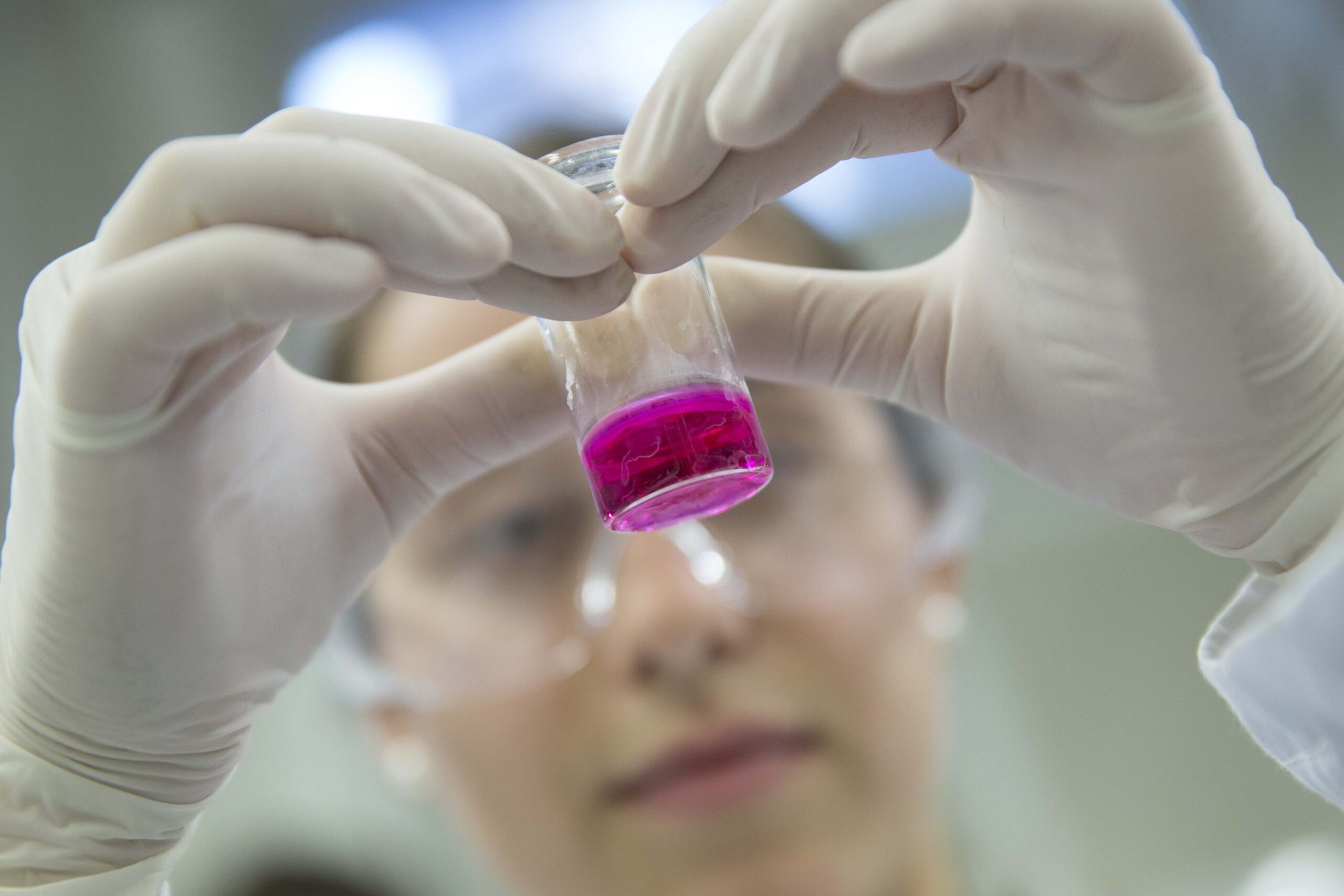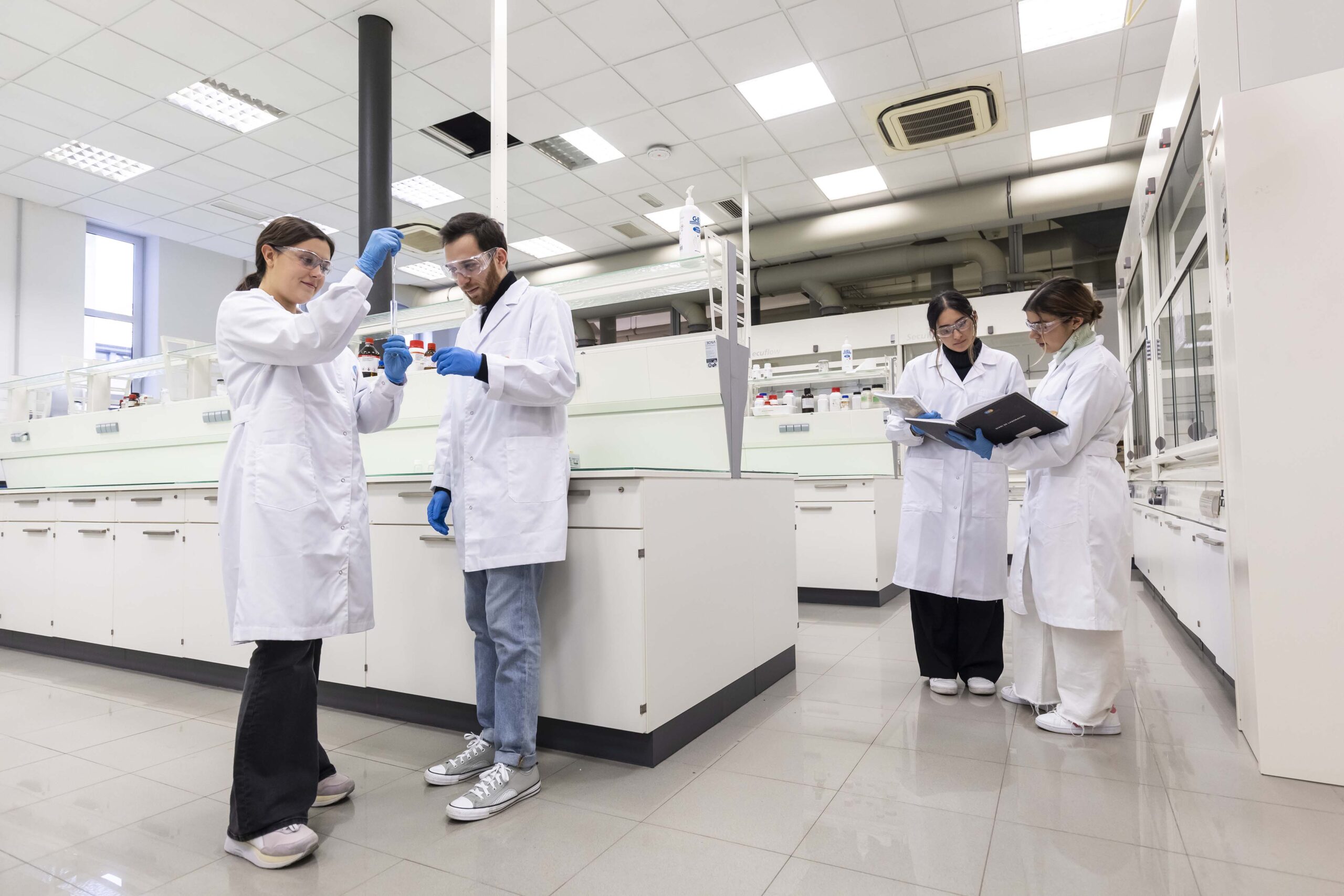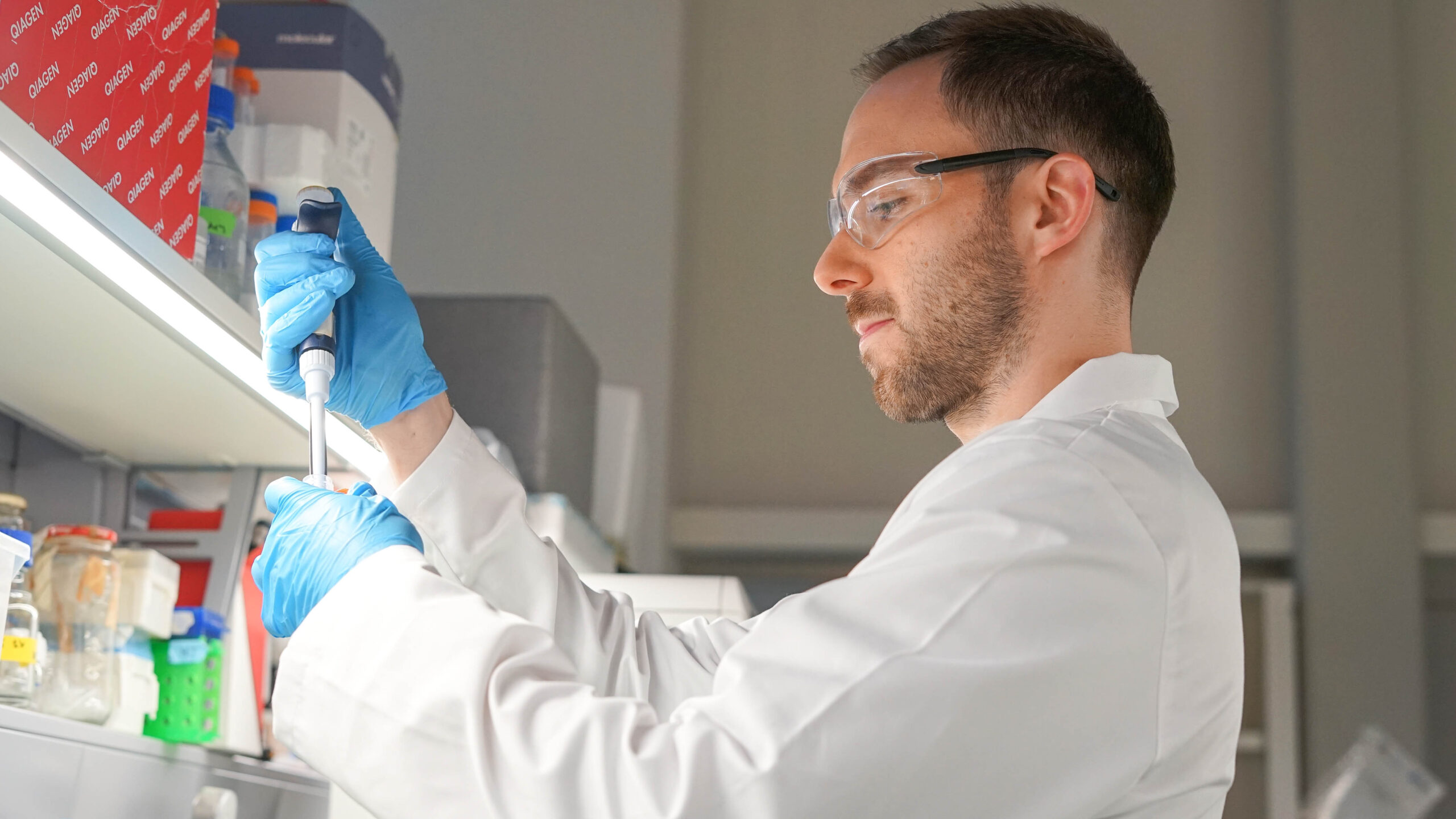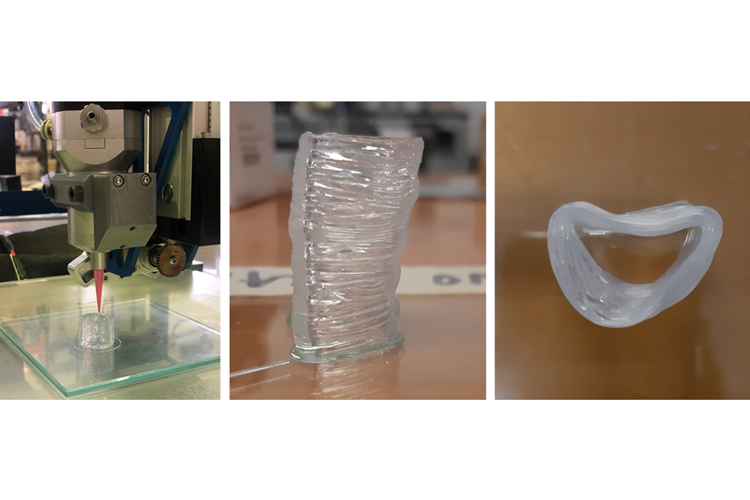Within the framework of the QuirofAM project, the CIM center, the IQS GEMAT group and the Tractivus spin-off, have co-developed a 3D printer that allows printing of medical grade silicone for the manufacture of medical devices. As a first demonstrator, the researchers have developed a completely customized tracheal stent.

Detail of the tracheal stent 3D printing
QuirofAM is one of the projects created within the RIS3CAT-Llavor 3D community, supported by the Government of Catalonia to accelerate and develop the adaptation of additive manufacturing and 3D printing technologies across various industrial sectors, including healthcare.
QuirofAM’s overall objective is to transform surgical practice by incorporating additive manufacturing. To turn this challenge into a reality, silicone made for being printed using a bioplotter was studied, characterized, and developed to respond to the needs of two major applications established as part of the project: manufacturing medical models and manufacturing silicone-based medical devices.
The project, led by the CIM-UPC Foundation, benefitted from participation by companies and leading research centres, including the Materials Engineering Group (GEMAT) at the IQS School of Engineering, Tractivus, an IQS spinoff, and IDIBELL.
Medical grade 3D silicone printing for customized tracheal stents
As part of QuirofAM, the CIM centre, the GEMAT research group, and Tractivus have co-developed a 3D printer that makes it possible to print medical grade silicone to manufacture medical devices, maintaining the medical silicone unaltered and successfully printing complex geometric shapes. In addition, the printer has been equipped with specific screens that enable it to be used in clean rooms.
Silicone-based 3D printing of medical devices is of great interest in order to provide adaptability to human body tissues. This method improves both functionality and performance in addition to unlocking new uses for existing devices. Moreover, problems derived from the lack of adaptation of medical devices, such as device migration, can be reduced.
To address this challenge, processing the silicone without altering the formulation has been made possible, thus keeping the material from having to undergo the strict certifying tests for medical devices another time. QuirofAM has also ensured that the conditions in which the new printer might work meet the sterility and quality demands of the ISO 13485 standard on manufacturing medical devices.
Finally, the GEMAT group at IQS has characterized the physical, chemical, and mechanical properties to guarantee that the silicone printed using this technology is equivalent – in all aspects – to the silicone processed by conventional manufacturing methods, such as injection moulding.
A first demonstration
As an initial demonstration, the researchers developed a completely customized tracheal stent. Tracheal stents are medical devices that allow air to pass into the airway in the event of a narrowing of the tracheal walls. These types of ailments are derived from prolonged intubation or complications from cancer. The only treatment is the implantation of a tracheal stent: a tubular device that exerts enough radial force on the walls of the trachea to ensure it is possible to breathe.
Due to the lack of coherence that exists between the tubular surface and the anatomical geometries of the trachea, this device does not typically adapt well, resulting in it not fulfilling its function and causing complications such as migration or bleeding. Through the MIMICS software and working together with the new printer developed within QuirofAM, it has been possible to design a stent that is highly adaptable to the tracheal wall. As a result, migration is avoided and the stent can be used when printed under conditions that are suitable for manufacturing medical devices.

